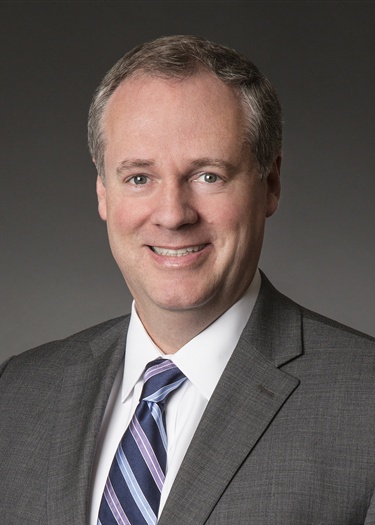What Companies Need to Do. Regulated entities must “make every effort to comply with environmental compliance obligations.” To be covered, a company must:
a) act responsibly to minimize the effects and duration of any noncompliance
b) identify the specific nature and dates of the noncompliance
c) identify how COVID-19 caused the noncompliance, and the decisions and actions taken in response, including best efforts to comply and steps taken to promptly comply
d) return to compliance as soon as possible
e) document the information, action, or condition specified in a) through d).
Limitations on Applicability. The guidance covers civil enforcement, not criminal violations or violations of conditions of probation. Companies also still must “prevent, respond to, or report accidental releases of oil, hazardous substances, hazardous chemicals, hazardous waste, and other pollutants.” It also does not apply to activities carried out under Superfund and Resource Conservation and Recovery Act corrective action, which EPA will address in a separate guidance.
Enforcement Discretion. EPA will exercise its enforcement discretion in the following areas:
- Routine compliance monitoring and reporting by regulated entities. EPA “does not expect to seek penalties for violations of routine compliance monitoring, integrity testing, sampling, laboratory analysis, training, and reporting or certification obligations” where COVID-19 caused the violations. If quarterly (or less) monitoring is missed, a company need not “catch-up.” However, companies must conduct late monitoring or reporting for longer-term requirements (e.g. biannual or annual).
- Settlement agreement and consent decree reporting obligations and milestones. EPA “will generally not seek stipulated or other penalties for noncompliance” with administrative settlement requirements, but parties should use “the notice procedures … in the agreement, including notification of a force majeure, as applicable.” For EPA/Department of Justice consent decrees, EPA will coordinate with DOJ to exercise discretion, but courts retain jurisdiction over such decrees. Parties should “proceed as proposed in their notice” unless told otherwise.
- Facility operations. Regulated entities should continue to operate their facilities “in a manner that is safe and that protects the public health and the environment.” Where COVID-19 may “create an acute risk or an imminent threat to human health or the environment,” regulated entities should contact their implementing authority, which will determine next steps. Where a facility suffers an air emission control or wastewater or waste treatment system failure, regulated entities should notify their implementing authority and include in their notice “information on the pollutants emitted, discharged, discarded, or released; the comparison between the expected emissions or discharges, disposal, or release and any applicable limitation(s); and the expected duration and timing of the exceedance(s) or releases.” The following industries were addressed specifically.
- Hazardous waste generators: Where generators cannot transfer waste within the applicable regulatory timeframe, they may continue to store the waste without losing their generator status — while continuing to label and store their waste properly. Very Small Quantity Generators and Small Quantity Generators will likewise retain their prior status, even if the amount of waste on site exceeds regulatory limits.
- Animal feeding operations: The inability to transfer animals off site will not convert an operation to a concentrated animal feeding operation (CAFO) and will not change the status of a CAFO to a larger regulatory level.
- Public water systems. Public water systems regulated under the Safe Drinking Water Act are to continue normal operations, maintenance and sampling to ensure safe drinking water supplies. EPA is prioritizing (1) monitoring of National Primary Drinking Water constituents to protect against microbial pathogens; (2) nitrate/nitrite and Lead and Copper Rule monitoring; and (3) monitoring for contaminants for which a system has been non-compliant.
- Critical infrastructure. EPA may consider a short-term No Action Assurance where a facility is essential critical infrastructure and EPA determines it is in the public interest.
- Criminal violations. Although the guidance does not generally apply to criminal violations, EPA “will distinguish violations that facilities know are unavoidable as a result of COVID-19 restrictions from violations that are the result of an intentional disregard for the law.”
Summary and Next Steps for the Regulated Community. EPA’s guidance is an important first step, but it will be updated as implemented — and EPA intends to issue more targeted guidance for certain programs. Regulated entities should monitor this closely.
The guidance sends a message that EPA will be reasonable, provided there is demonstrated nexus to the pandemic. A regulated entity should therefore take all reasonable steps to maintain compliance while it documents the connection between COVID-19 and potential violations. As criminal violations are not covered, environmental wrongdoing will still be scrutinized.
Further, the guidance does not provide absolute protection. States, local governments, and tribes have their own authorities and may not follow this guidance (several have already announced their own COVID-19 policies). EPA’s exercise of enforcement discretion does not bind potential citizen suit plaintiffs.
Note that the Occupational Safety and Health Administration (OSHA) and the Pipeline and Hazardous Materials Safety Administration (PHMSA) have also issued COVID-19 guidance (OSHA’s guidance is available here and PHMSA’s is available here).
Attorney Advertising—Sidley Austin LLP is a global law firm. Our addresses and contact information can be found at www.sidley.com/en/locations/offices.
Sidley provides this information as a service to clients and other friends for educational purposes only. It should not be construed or relied on as legal advice or to create a lawyer-client relationship. Readers should not act upon this information without seeking advice from professional advisers. Sidley and Sidley Austin refer to Sidley Austin LLP and affiliated partnerships as explained at www.sidley.com/disclaimer.
© Sidley Austin LLP




